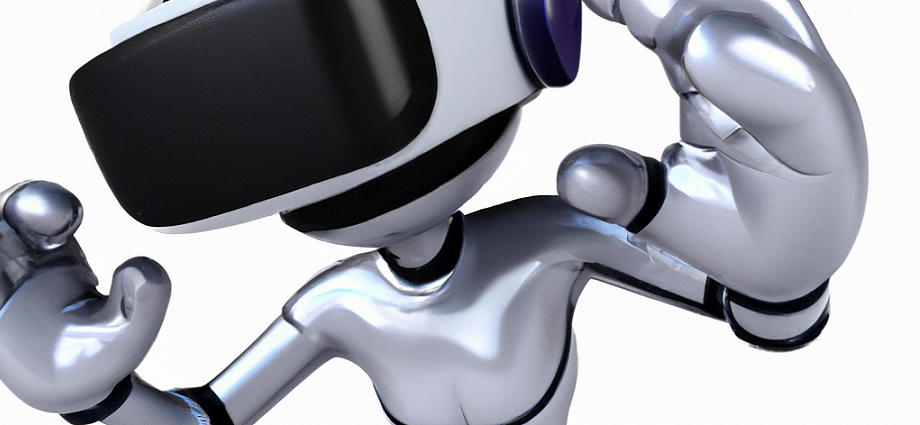As technology advances, it’s not surprising that new and exciting developments have emerged in the realm of robotics, artificial intelligence, and augmented reality. But what many people might not realize is that virtual reality (VR) has been playing a significant role in the evolution of these fields.
What is Virtual Reality?
Virtual Reality is a computer-generated environment that simulates a realistic or imaginary world, giving users an immersive and interactive experience. The user can manipulate virtual objects and interact with a simulated environment through special equipment such as headsets, gloves, and motion sensors. The technology has been around for decades, but it’s only in recent years that it has advanced significantly and become more accessible.
Virtual Reality and Robotics
The integration of VR with robotics is a game-changer in the world of automation. With VR, engineers and designers can create a virtual environment that simulates real-world scenarios to test robots’ capabilities and performance. This method is faster, cheaper, and safer than traditional testing methods that involve physical robots, which can be expensive to manufacture, repair, and maintain.
Virtual Reality is a useful tool in training new operators. They can simulate operating robots in a virtual environment, allowing them to practice and become familiar with the robot’s controls, functionality, and safety protocols before working with physical robots. This approach significantly reduces the learning curve and ensures that operators are well-prepared.
Moreover, VR can be used to control robots remotely. With a VR headset, a person can see through the robot’s eyes and control its movements using hand gestures. This approach is particularly useful in hazardous environments where humans cannot operate, such as space exploration, deep-sea exploration, and disaster relief efforts.
Virtual Reality and Artificial Intelligence
Virtual Reality and Artificial Intelligence go hand in hand, with each technology enhancing the other. AI algorithms can be trained in virtual environments, making them better prepared for the real world. For example, an AI algorithm trained to identify objects in a virtual world can transfer this knowledge to the real world, enabling it to recognize objects in real-time.
Additionally, VR can provide a platform for AI testing and development. AI models can be integrated into virtual environments, allowing developers to test their performance and make improvements without the need for physical robots. This approach saves time and resources and allows for more extensive testing of AI models.
Virtual Reality and Augmented Reality
Virtual Reality and Augmented Reality are often used interchangeably, but they are different technologies. VR creates a completely simulated environment, while Augmented Reality overlays digital information onto the real world. Both technologies have their unique advantages, but they also complement each other.
Combining VR and AR can create a mixed reality experience that integrates digital information with the real world. For instance, a user can wear a VR headset to simulate a car interior while an AR device displays valuable information about the car’s performance, speed, and fuel consumption. This approach has the potential to significantly enhance the user experience and provide valuable information to users.
AR and VR Technology in Action
Various industries are already using AR and VR technology, and they are transforming the way we live and work. Here are some examples:
- Education: Educators are using VR to create immersive learning experiences that engage students and improve their learning outcomes. For instance, medical students can practice surgeries in virtual environments, while history students can explore historical events and visit ancient ruins.
- Healthcare: Surgeons are using AR to access real-time information during operations. For example, they can use AR devices to display a patient’s medical records, vital signs, and X-ray images, enabling them to make informed decisions during the surgery.
- Manufacturing: Manufacturers are using VR to create virtual prototypes of products before physical production. This approach saves time and resources and allows them to test different designs, make improvements and get feedback before committing to physical production.
- Gaming: VR is perhaps the most well-known application of the technology, providing immersive gaming experiences that transport players to other worlds. With VR, players can interact with digital environments in ways that were previously impossible, making gaming more engaging and entertaining.
- Architecture and Design: Architects and designers are using VR to create virtual representations of buildings and structures. This approach allows them to visualize designs in 3D, make changes and get feedback before construction begins. Clients can also experience the virtual environment and provide feedback, reducing the likelihood of costly changes during construction.
The Future of VR, AI, and AR
As technology continues to advance, we can expect even more exciting developments in the world of VR, AI, and AR. For instance, the advancements in VR technology will make it more accessible and affordable, enabling more people to experience immersive environments. Similarly, the sophistication of AI will equip it to handle complex tasks more efficiently, and the integration of AR with the real world will provide users with valuable information and insights.
Conclusion
Virtual Reality is transforming the world of robotics, artificial intelligence, and augmented reality as it possesses the ability to create simulated environments that are immersive and interactive. This technology is providing engineers, designers, and developers with new ways to test, train, and develop these technologies. Various industries are already using AR and VR technology, transforming the way we live and work. As technology continues to advance, we can expect to see even more exciting developments in the future. VR, AI, and AR offer endless possibilities for students, healthcare professionals, manufacturers, gamers, architects, and anyone who seeks to benefit from these transformative technologies.

